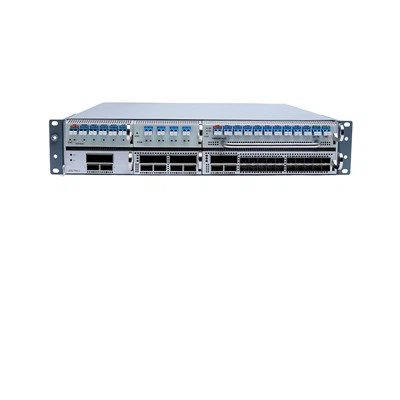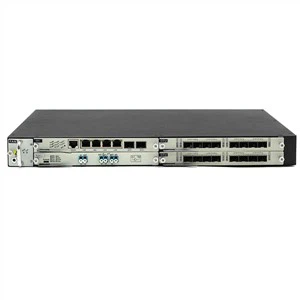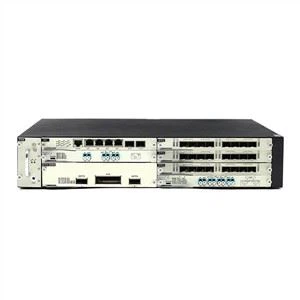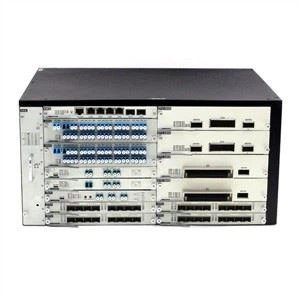The 400G optical module is also called the 400G optical transceiver module, which is mainly used for photoelectric conversion. The electrical signal is converted into an optical signal at the transmitting end, and then transmitted through the optical fiber. At the receiving end, the optical signal is converted into an electrical signal.
As an electronic component of photoelectric conversion, optical module can be widely used in data transmission. Optical module has been widely used in the fields of data broadband and telecommunication communication, and its applications in FTTX, data center, security monitoring and smart grid are also developing.
The massive information connection between data centers needs optical communication, and optical module is the key factor to determine its performance. The data center communication optical module can be divided into three types according to the connection type, including:
① Data center to user: generated by the end-user behaviors such as browsing web pages, sending and receiving e-mail and video streaming through the cloud;
② Data center interconnection: mainly used for data replication and system upgrade
③ Data center internal: mainly used for information storage, generation and mining. According to Cisco's prediction, the internal communication of data center accounts for more than 70% of data center communication.
The bearer network is upgraded back. The man is from 10G / 40G to 100G, and the backbone network is from 100G to 400G. In the commercial period, the optical network module will be upgraded. Bearer network is mainly divided into backbone network, provincial network and metropolitan area network. Backbone network and provincial network need high-speed and large-capacity transmission, and OTN and other transmission networks suitable for large particles and long-distance are preferred. Man is divided into core layer, convergence layer and access layer. Different levels of bearer networks provide different capacity of medium return service through different port rates, so it is also necessary to use medium return optical modules with different rate requirements.
Optical modules are also constantly updated. Overall, the transmission access layer is upgrading from 10G to 25G / 50G, the transmission convergence layer is upgrading from 40G / 100G to 50G / 100G, the transmission core layer is also upgrading from 100G to 200G, and the WDM system is sinking rapidly.
In terms of quality, 1G / 10G low-speed optical modules are the main traditional data, while 40G / 100G / 400G high-speed optical modules are used in cloud data centers. From the perspective of quantity, the traditional data center is dominated by north-south traffic, while the cloud data center has improved its traffic in the east-west direction. The growth of East-West connection has driven the number of single server high-speed optical modules, putting forward higher requirements for optical modules.
It has taken 5 years for 10G rate ports to iterate to 40G rate ports, and 4 years for 40G rate ports to upgrade to 100G rate ports. Since 2018, the industry has begun to deploy 400G architecture. After 100G, the industry is moving towards 400G deployment.
Classification of 400G optical modules
QSFP-DD and OSFP are expected to become the mainstream 400G packaging mode. In terms of packaging form, 400G optical modules can be divided into CDFP, CFP8, OSFP, QSFP-DD, etc. Among them, QSFP-DD and OSFP have more advantages in size, heat capacity, power consumption, backward compatibility and bandwidth than other 400G optical module packages, and have gradually become the mainstream solutions.
Package type of 400G optical module:
1、 QSFP-DD
The full name of QSFP-DD is Quad small form factor pluggable double density, Q refers to "Quad", 4-way meaning, and DD refers to "double density". This scheme is an extension of QSFP, adding one line from the original 4-channel interface to 8-Channel, which is called double density. This scheme is compatible with QSFP scheme, which is one of the main advantages of the scheme. The original QSFP28 module can still be used, just insert another module. Its schematic diagram is as follows:

2、 OSFP
OSFP uses 8, 56g channels to realize 400Gbe for OSFP optical module. The 56gbe signal is formed by a 25G DML laser under the modulation of pam4. This standard is a new interface standard and is not compatible with the existing photoelectric interface.
OSFP has its own radiator, its size is 100.4 * 22.58 * 13 mm ^ 3, which is much smaller than CFP8, and its power consumption is relatively low, with a maximum of 15W. It is slightly larger than the QSFP-DD in size and therefore requires a larger area of PCB. The pins of its electrical interface are different from those of QSFP-DD, with a row at the top and bottom, as shown in the figure below:

3、 CWDM 8
The standard is an extension of cwdm4 standard. The rate of each wavelength is 50G, and 400G can also be realized. The wavelength is defined as:

According to the industry standard, different packaging forms of 40OG optical modules have their own disadvantages and advantages
According to the industry standard, different packaging forms of 40OG optical modules have their own disadvantages and advantages:
1. 40OG CDFP optical module - supports hot swap; however, due to the need for parallel transmission of 16 channels of signals, the power consumption and volume are large.
2. 40OG COBO optical module - can use the motherboard to heat dissipation, good heat dissipation and small size; but it does not support hot swap, so it is difficult to maintain later.
3. 40OG CFP8 optical module - equivalent to the expansion of CFP4, the number of channels is increased to 8 channels, which can be quickly put into the market; but the cost is high, the size and power consumption are large.
4. 40OG QSFP-DD optical module -- compatible with existing QSFP + / QSFP 28, small size and convenient maintenance.
5. 40OG OSFP optical module - with integrated heat sink, it can greatly improve the heat dissipation performance; however, the new interface standard is not compatible with the existing photoelectric interface, which is slightly larger than the QSFP-DD, requires a larger area of printed circuit board (PCB), and has high power consumption.
In view of the current market situation, the 40OG QSFP-DD optical module is expected to become the mainstream packaging of 40OG optical module with the advantages of miniaturization, integration and downward compatibility.
What is the function of 400G optical module?
The main function of the 400G optical module is to improve the data throughput and maximize the bandwidth and port density of the data center. The future trend of 400G optical module is to achieve wide gain, low noise, miniaturization and integration, and provide high-quality optical communication module for next generation wireless network and ultra large scale data center.
How many chips does 400G optical module need?
China relies heavily on imports of 400G optical module chips. From the perspective of global competition pattern of optical chip industry, China's high-end optical chip with high-speed as the main feature is insufficient self-sufficiency rate, and the demand for related optical chips is extremely dependent on imports. Therefore, although the optical chip only needs to use one piece in the 400G optical module, it has a high cost ratio and is the crown jewel of the optical module industry value chain. In optical modules, optical chips occupy the highest value end, and the higher the end, the higher the cost of optical chips. In the 10G / 25G optical module, the cost of optical chip accounts for about 30%, the cost of optical chip in 40G / 100G optical module accounts for about 50%, and that of 400G optical module accounts for 70%.
What is the difference between 400G optical module and 10G, 25G and 40G optical module?
Although 10G, 25G, 40G and even 100G optical modules have become the mainstream in the market, with the continuous improvement of bandwidth, port density and system energy consumption, 400G optical module will be a new stage to further promote the technology to a higher speed system. Compared with 10G, 25G and 40G optical modules, the arrival of 400G optical module will make optical communication enter a new era. Optical communication is changing from single carrier modulation coherent detection of low-end optical module to multi carrier level phase modulation and array coherent detection of polarization multiplexing. Photonic integration and electronic integration, ADC / DSP technology will be the key to the commercialization of 400G optical communication module and system. With the urgent need of Ethernet standardization, the requirement of optical parallelization will greatly promote the photonic integration technology.
What is the market value of 400G optical module?
As we all know, 100G technology products have been mature, 400G is the current hot topic, the industry is very concerned about the progress of 400G optical module. Nowadays, the R & D and mass production progress of 400G optical module is also relatively satisfactory. In the current market background, with the increasing demand for bandwidth of super large-scale data center, 400G optical communication module has become the best choice to improve system performance and reduce bandwidth cost. With the advent of 5g network in the later stage, it will be another positive driving factor for the market value of 400 optical module.
contact:support@htfuture.com
Skype:sales5_ 1909,WeChat:16635025029





















